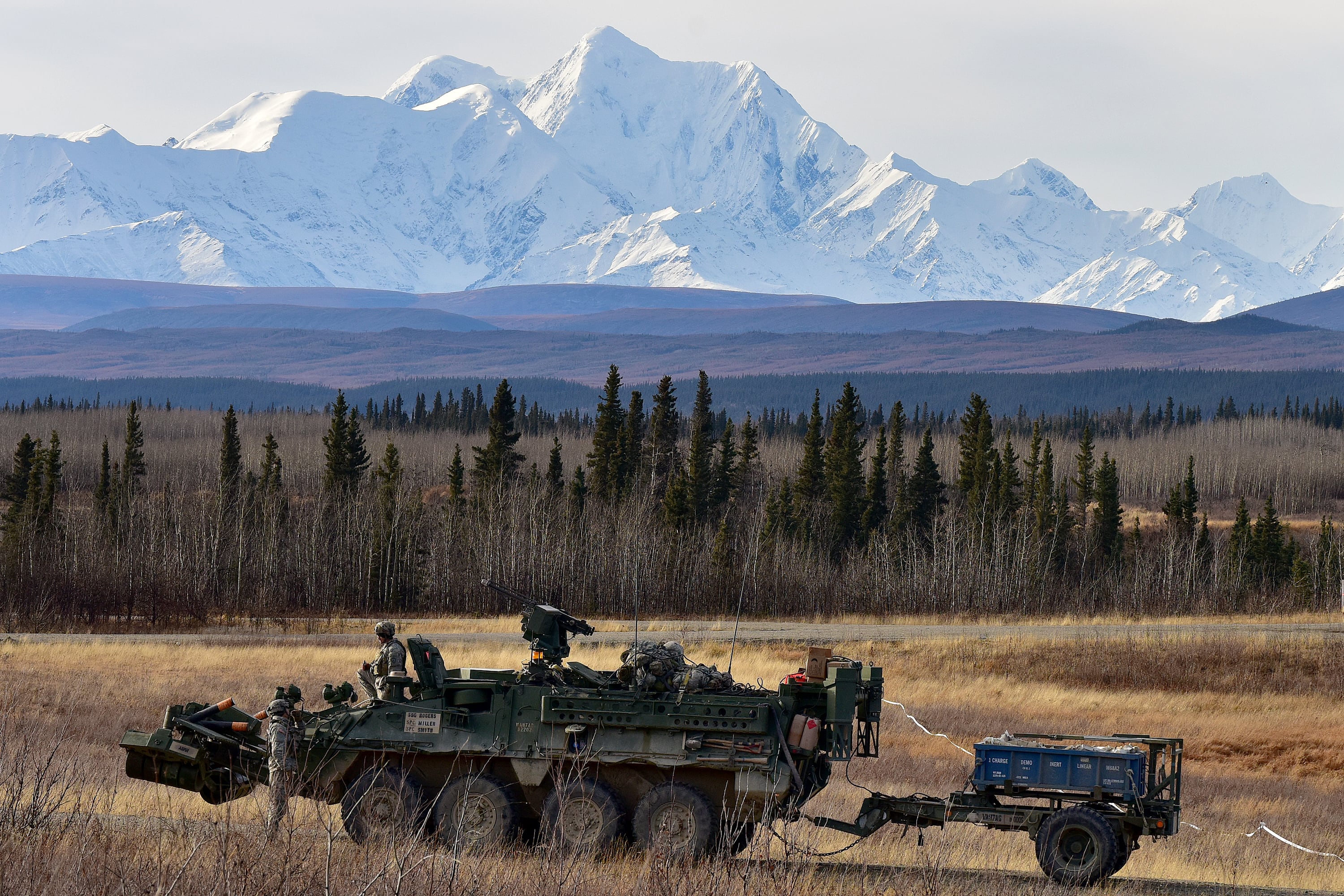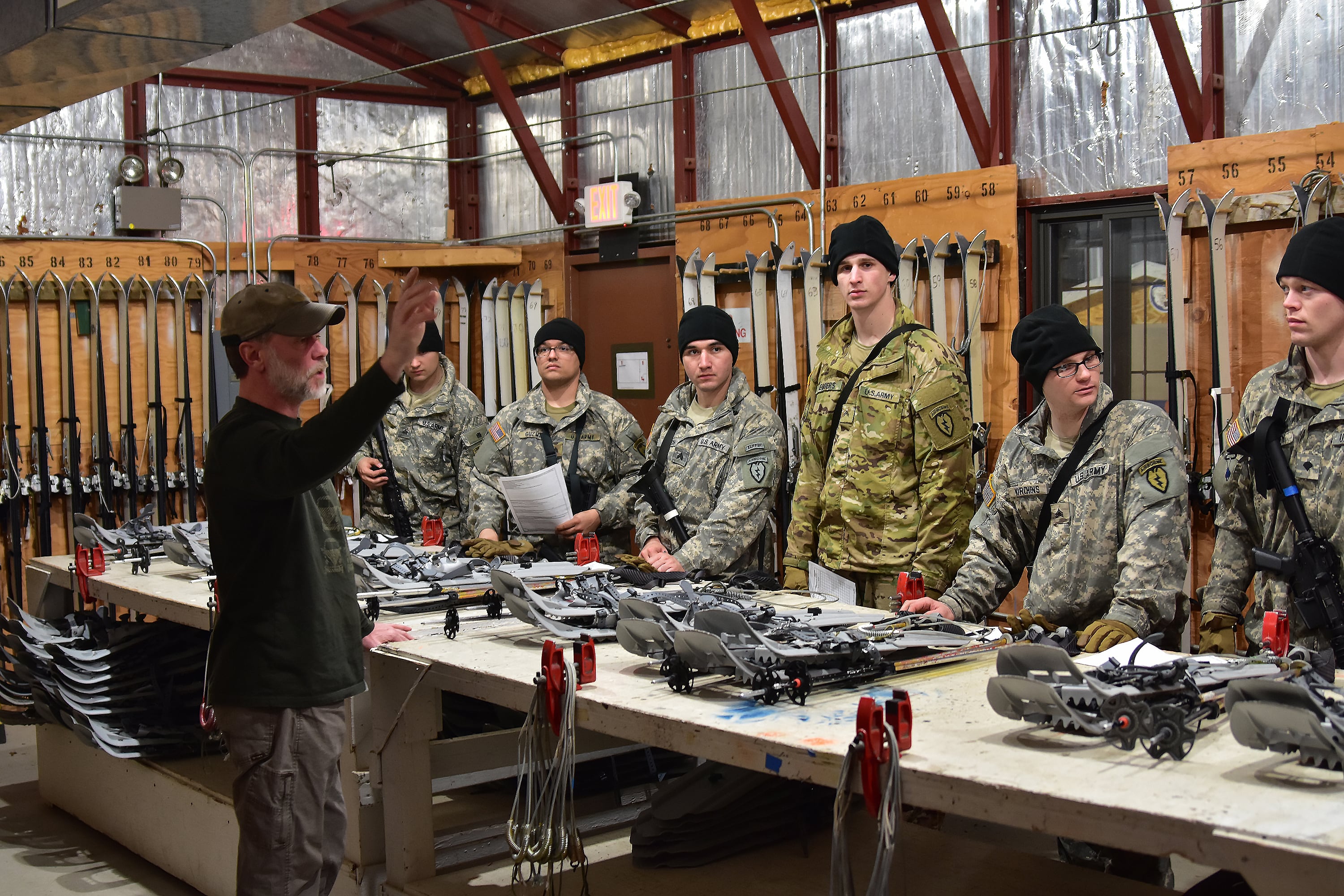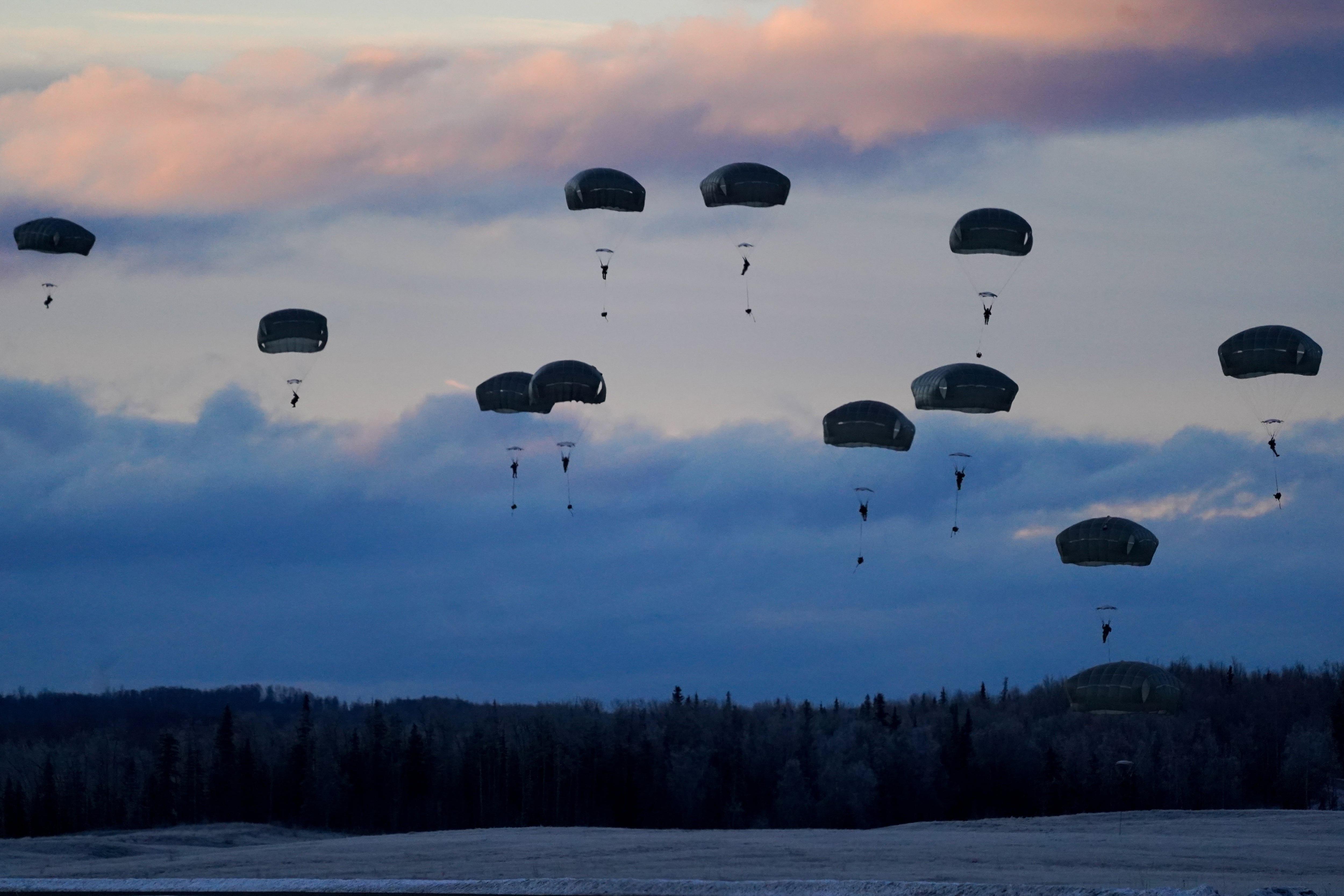Predictable time off, an intensive behavioral health program, vitamin D supplements, black-out curtains, a focus on empathy for soldiers facing legal action and an increased food allowance are among the initiatives Army Alaska is implementing after military medical experts surveyed 4,000 soldiers at Fort Wainwright in Fairbanks, Alaska, this spring.
The Army launched a behavioral health study after five soldiers died by suicide at the post between May 2018 and April 2019.
Another three soldiers died this summer and fall in what have been classified as suicides, Army Alaska commander Maj. Gen. Peter B. Andrysiak said in a telephone interview. Five other deaths this year are still under investigation.
That suicide rate stands out compared to the rest of the active-duty Army, which had a rate of 29 suicides per 100,000 soldiers in 2018, according to the Pentagon’s annual suicide report.
“The suicides that we have, they’re no different from the rest of the Army in terms of the reasons,” Andrysiak said. “What is different is the numbers ... the numbers being north in Alaska.”
Fort Wainwright is located 360 miles north of Anchorage, where a large contingent of the command is based. The Army dispatched a public health team to the region in March to conduct an epidemiological consultation, or EPICON, after the cluster of suicides was noticed.
The EPICON study found that about 10 percent of the soldiers surveyed wanted to hurt themselves over the past month. It also found that roughly one-third of soldiers described their sleep quality as poor, with about 40 percent of those citing the excess light in the barracks as an issue.
The post can be a difficult assignment, especially for young soldiers.
“It’s seven hours to get from Fairbanks to Anchorage, which does have a decent nightlife and breweries, but you’re really in an echo chamber up in Fairbanks," said a former enlisted soldier turned officer who was stationed at the post during the rash of incidents.
The soldier, who was interviewed by the EPICON team, said that he personally knew one soldier who died by suicide there this fall, but was dismayed when his friend’s death was not more readily acknowledged by post officials.
“Had I not personally known his mom and been friends with his friends on Facebook, I’d still think he was alive today,” said the soldier, who is now stationed elsewhere. He was also concerned that some changes, like black-out curtains, wouldn’t have the desired effect.
“I will give credit where it’s due, they’re at least acknowledging the fact that they need to do a lot to get these soldiers out of the barracks."
Getting soldiers out of the barracks
The location in interior Alaska “absolutely” has an impact on some of these cases, in that soldier’s opinion. That’s partially because of the amenities that were available during his time on post, but also because of the challenges that the long summer days and long winter nights bring.
Daylight at the post lasts from roughly 3 a.m. to past midnight during the summer months. During the winter, residents of this area receive less than four hours of daylight at its peak. The long days provide extended opportunities to take advantage of a range of outdoor activities, but summer is also prime training time.
“You aren’t going outside in negative 40 degrees unless you have to," he explained. “If you get these vitamin D deficiencies, it’s only going to compound the loneliness, the geographic separation."
In addition to the 4,000 soldiers surveyed, the EPICON team held 45 focus groups on post and command teams were interviewed.
“They don’t do EPICONs in areas where everything is going well,” said Andrysiak, who took command in July. “The data is pretty rich ... but it doesn’t tell you why someone chose suicide.”
What the data does do is provide contributing factors that officials can address, including a lack of food options, poor sleep conditions and the inability to travel and socialize.
And the command says it has put significant resources toward addressing those shortfalls.

Army leaders at the Pentagon approved a 10 percent increase to the basic daily food allowance for soldiers on Wainwright this November, allowing them to take advantage of special food bars at post dining halls. On-call shuttle transportation is now ongoing with two dedicated vans, as well as contract drivers to keep the shuttle service going.
Black-out curtains will be installed by May 2020 to combat Fairbanks’ roughly 18-hour summer days. A gym on post, the Wolf’s Lair Fitness Center, is also now staffed to operate all day and night.
A new intensive outpatient behavioral health program began taking referrals this month, and the first patients will receive care in January. Medical facilities on post also approved over-the-counter dispensing of vitamin D doses. Soldiers need only walk-in to Army pharmacies with their ID card to receive 90 tablets and unlimited refills.
Leaders are also lobbying for funds to decrease the cost incurred by soldiers and their dependents when they receive orders to Fort Wainwright — a far more expensive move than those to bases within the contiguous United States.
Predictability for soldiers
Wainwright also received $240,000 for entertainment support and started “Arctic Family Time,” which means 3 p.m. releases on the last duty day of the second and fourth weeks of the month, as well as dedicated time to take care of pay and financial issues on the first Friday of the month.
“We’re trying to give them more predictability so there’s less sitting around and more of what they do is purposeful,” Andrysiak said.
Alaska faces training challenges that other Army posts simply do not. A brigade preparing to deploy from Fort Hood, Texas, can train year-round, but an Alaska-based brigade has to use its time more judiciously.
“There are certain times of the year you just don’t go out and do collective training here,” Andrysiak said. “There may be these long periods of lulls in the darkest part of winter, but then you have the inverse for the rest of the year.”
Army Alaska has been trying to create a more predictable training path for soldiers, meaning block leave is set regularly. “Predictable block leave in the winter so they know when they can leave and predictable block leave in the summer so they can actually enjoy Alaska,” Andrysiak added.

The officer previously based at Wainwright said that shifting some training away from the summer months can do wonders, such as a National Training Center rotation his unit did to Fort Irwin, California, during one winter.
“That was the greatest thing ever,” he said. “That got us out of the cold and it actually boosted morale.”
However, some things that appear to be quick-fixes aren’t always helpful in practice. Blackout curtains, for example, can impede airflow in rooms.
“The three years I was there, it got up to 90 degrees a decent amount of time and you’re just sitting there sweltering because you don’t have any of the airflow coming in,” the soldier said. "And sure, you can buy an air conditioner, but that’s $250.”
Army Alaska officials said they renovating some barracks on post but haven’t committed to installing air conditioning units due to concerns that the buildings’ wiring would need to be upgraded first.
Buying a “happy light,” which provides the full spectrum of light for those at northern latitudes, for each soldier would also help, he added. The officer also mentioned that while some recreation facilities on post were nice and certainly expensive, they didn’t always address what soldiers needed.
“They spent all that money on that ice rink that’s up there when they should have spent it on turf, a soccer field, places where people can actually get out of their house, out of the cold and work out," he added.
Army Alaska officials said they’re expecting $910,000-worth of new gym equipment for the post’s two gyms beginning this spring.
Soldiers facing punishment can’t be ostracized
Cases involving suicide often encompass a range of issues with no clear determining factor. While the EPICON study came with recommendations, one less tangible effort Andrysiak is currently pushing deals with soldiers facing potential punishments or ongoing investigations.
“If someone gets in trouble, the last thing you should do is ostracize them,” Andrysiak said. “Sometimes this happens among their peers.”
A soldier who gets in trouble for driving under the influence may trigger retraining for their entire unit. That can turn fellow troops against them. And Andrysiak noted that he is "not naive to think that maybe some junior leaders are doing that.”
“You need to reinforce that none of these things are ever fatal or ever final. If you get into trouble, you can recover," Andrysiak said.
“Of all the suicides to date, I don’t know that there was anyone who was in the process of being chapter’d out [of the Army]," he added. "There may have been someone who was in the process of a command investigation, [but] the results were not final.”
Army Alaska’s chief of staff, Col. Sean Williams, said that the command set up a suicide prevention task force in August after the EPICON study provided draft findings to leadership.
The Department of the Army Headquarters also helped Army Alaska conduct “engage training," according to Williams.
“It’s really about training junior leaders how to interact and communicate with younger soldiers to combat the stigma” of seeking help, Williams said. “Tied to that was some additional training and mandatory use on a monthly basis of what we call a soldier-leader risk reduction tool, which enables leaders in a systematic way to sit down with a soldier and look at all the different aspects that we think could lead to, not only suicide, but also other risk factors, like drug use, DUIs, sleep problems.”

Aside from sleep issues, the biggest contributing factors identified by the EPICON study included anxiety, depression, loneliness, a small element of post-traumatic stress and hazardous drinking.
Andrysiak pushed back against the perception that there is a “capacity problem” for behavioral health professionals or that soldiers will be treated differently for seeking help. The EPICON study found that 21 percent of the 4,000 soldiers believed going to behavioral health could harm their careers.
“You’d be surprised how many soldiers are just perpetuating myth or rumor up there,” Andrysiak said.
“There was another data point about the perceived lack of capacity with behavioral health, and we weren’t even using the capacity that was available,” he added. “That’s not soldiers going and getting turned away; that’s soldiers who have a perception of it for one reason or another.”
Perception is an important part of suicide prevention, according to Andrysiak. Although Fort Wainwright’s remote location presents challenges, it can also be a great assignment. The post’s privatized housing was actually well-ranked in a recent Army survey and the access to nature is unparalleled.
“It’s a great place to live and up there, there are a lot of opportunities. We just have to make sure that is known,” Andrysiak said, pointing to the reform initiatives put in place to improve the quality of life and access to resources.
“Army leadership is committed to this,” he added. “I saw the chief last week and he continues to remind me to tell him what I need. Right now, we’re in a good place because his staff is very responsive to our needs and resourcing a number of initiatives.”
The Veterans and Military Crisis Line provides 24/7 confidential support for service members and family members. It can be reached at 800-273-8255, by texting 838255 or online chat.
Kyle Rempfer was an editor and reporter who has covered combat operations, criminal cases, foreign military assistance and training accidents. Before entering journalism, Kyle served in U.S. Air Force Special Tactics and deployed in 2014 to Paktika Province, Afghanistan, and Baghdad, Iraq.





